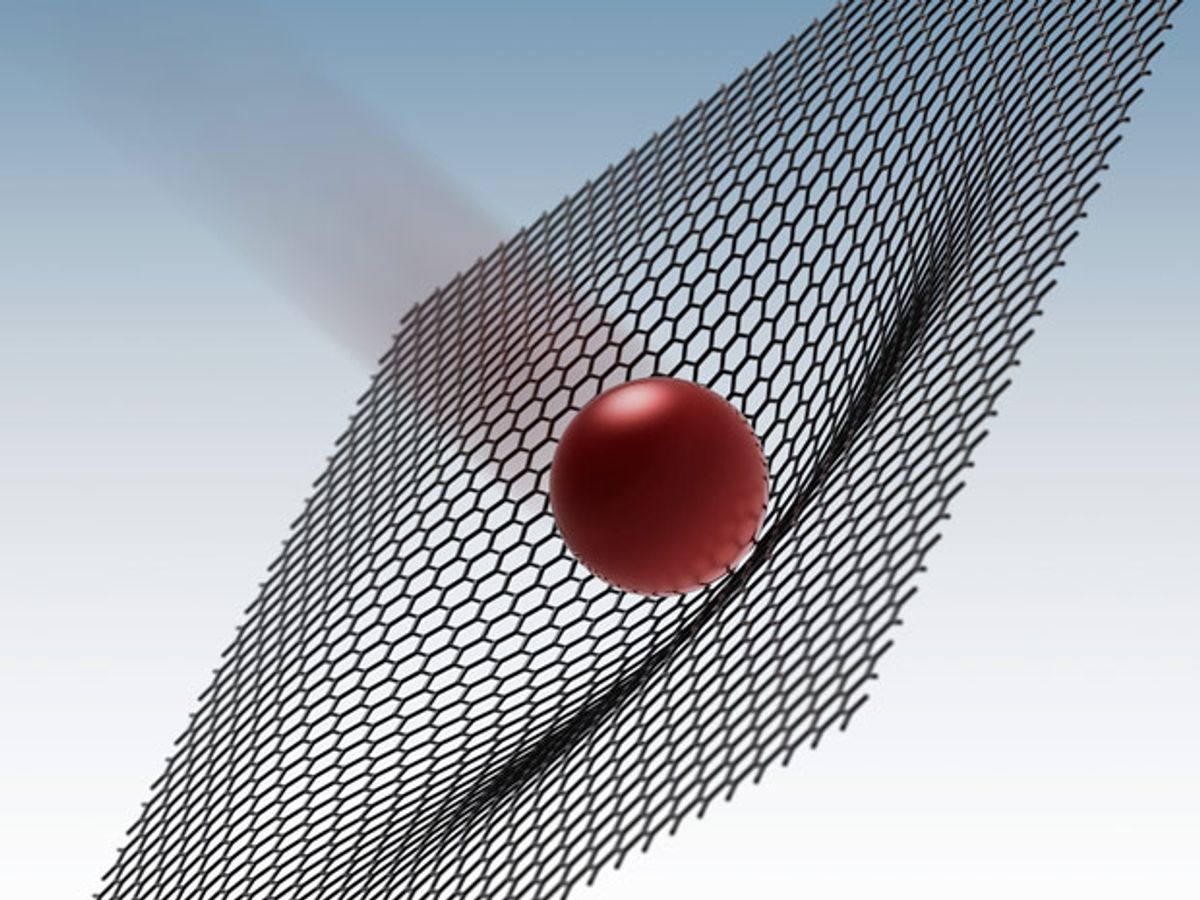While carbyne may be the strongest material, for now its strength exists only in computer models.
Outside the virtual world, graphene is showing the real muscle. In recent tests it dissipated the kinetic energy of micobullets ten times better than steel.
Researchers at Rice University reported the results of experiments last week in the journal Science that involved shooting a microscopic bullet less than tenth of size of human hair at multilayer sheets of graphene. The bullet travelled at around three kilometers a second—more than three times faster than the speed of a bullet from an AK-47. But when it struck the graphene the projectile’s energy was reduced, indicating that graphene could be used for macroscopic applications such as bullet proofing materials.
The electronic properties of graphene and even its tensile strength have been extensively investigated. However, prior to this most recent research, its ability to withstand impacts had not really been determined .
To take these measurements, the lab pioneered a test known as the laser-induced projectile impact test (LIPIT). In LIPIT the energy produced by a laser pushes microbullets away from the opposite side of an absorbing gold surface.
The research used the LIPT to measure how multilayer graphene sheets ranging in thickness from 10 to 100 nanometers (up to 300 layers) would withstand the impact. Using a high-speed camera to capture the impact, the researchers observed that the projectiles left a fractured pattern of “petals” around the point of impact, demonstrating that the graphene had stretched considerably.
A video describing the experiment and the results can be seen in the video below:
“We started writing the paper about the petals, but as we went along, it became evident that wasn’t really the story,” Edwin “Ned” Thomas, who led the research, said in a press release. “The bullet’s kinetic energy interacts with the graphene, pushes forward, stretches the film and is slowed down.”
One of the key properties used by graphene to reduce the kinetic energy of the bullet was the way tensile stress moves through it. Tensile stress cannot travel faster than the speed of sound in a material.
“For graphene, we calculated the speed at 22.2 kilometers per second, which is higher than any other known material,” Thomas said. (It’s just 0.34 km/s for air at sea level.)
Thomas and his colleagues believe that these tests indicate that graphene could be used in bullet proof vests as well as protecting spacecraft from the debris hurdling through space.
“LIPIT lets us develop rapid methodologies to test nanoscale materials and find promising candidates,” said Thomas in the release. “We’re working to demonstrate to NASA and the military that these microscopic tests are relevant to macroscopic properties.”
Dexter Johnson is a contributing editor at IEEE Spectrum, with a focus on nanotechnology.



